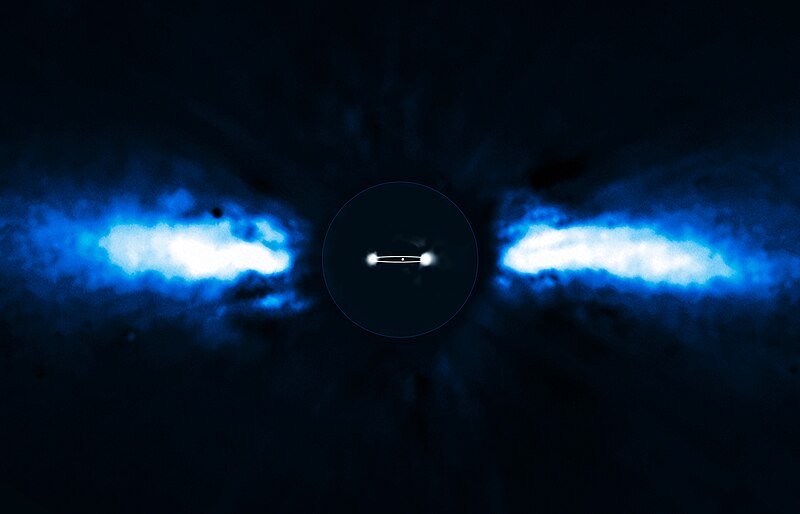Fichier:Beta Pictoris.jpg

Taille de cet aperçu : 800 × 514 pixels. Autres résolutions : 320 × 206 pixels | 640 × 412 pixels | 1 024 × 658 pixels | 1 280 × 823 pixels | 3 000 × 1 929 pixels.
Fichier d’origine (3 000 × 1 929 pixels, taille du fichier : 574 kio, type MIME : image/jpeg)
Historique du fichier
Cliquer sur une date et heure pour voir le fichier tel qu'il était à ce moment-là.
| Date et heure | Vignette | Dimensions | Utilisateur | Commentaire | |
|---|---|---|---|---|---|
| actuel | 10 juin 2010 à 20:28 |  | 3 000 × 1 929 (574 kio) | KGyST | {{Information |Description={{en|1=For the first time, astronomers have been able to directly follow the motion of an exoplanet as it moves to the other side of its host star. The planet has the smallest orbit so far of all directly imaged exoplanets, lyin |
Utilisation du fichier
La page suivante utilise ce fichier :
Usage global du fichier
Les autres wikis suivants utilisent ce fichier :
- Utilisation sur ar.wikipedia.org
- Utilisation sur ast.wikipedia.org
- Utilisation sur en.wikipedia.org
- Utilisation sur en.wikiversity.org
- Utilisation sur es.wikipedia.org
- Utilisation sur ka.wikipedia.org
- Utilisation sur ko.wikipedia.org
- Utilisation sur no.wikipedia.org
- Utilisation sur pl.wikipedia.org
- Utilisation sur pt.wikipedia.org
- Utilisation sur ru.wikipedia.org
- Utilisation sur si.wikipedia.org
- Utilisation sur zh.wikipedia.org
